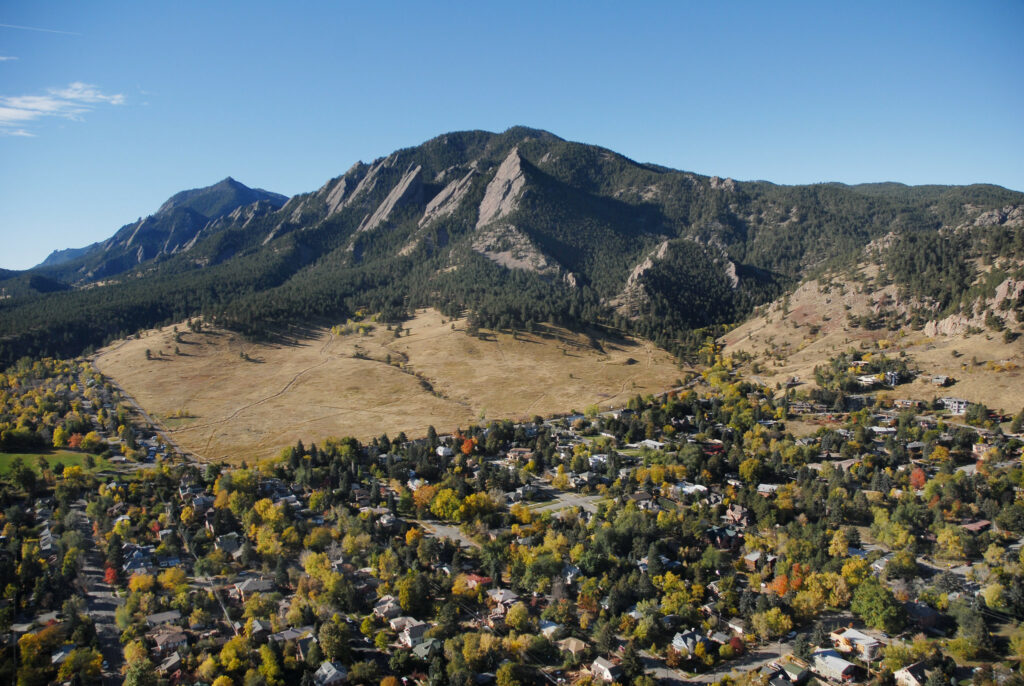By the numbers: What’s getting built in Boulder?

Friday, Sept. 15, 2023
As the city council looks to adopt new policies they hope will result in more and smaller dwellings, we thought it might be a good idea to look at what’s getting built under Boulder’s current rules — how many units, of what size, and what they’re renting for.
Thankfully, the city tapped a consultant to provide just such an analysis. The data below can be found on pages 549-553 of the September 7 council packet. Additional information on affordable homes can be found on the city’s dashboard.
Author’s note: This article is specific to rentals. The analysis did not include comparable information on single-family construction.
How many?
3,592 apartments (market rate and affordable)
2,047 market-rate rentals were built between 2010 and 2022, with a total 3,346 bedrooms
861 affordable apartments were built in that time. Another 684 were preserved or acquired. That means that 69% (or 1,545 units) of the city’s total affordable rental housing stock were added in the past 12 years.
56% of all rental construction in the city between 2010 and 2022 was permanently affordable units — more than twice what the city requires through its inclusionary housing program.
That’s because very few developers actually build the affordable rentals themselves. They pay Boulder a cash-in-lieu fee instead, which the city leverages with other funding sources to build more units.
This news doesn’t write itself. Throw us some cash if you’ve got it so we can keep this community news source free for all.
How big?
The average market-rate apartment built since 2010 is 1,066 square feet, larger than the U.S. and Colorado average.
Nationally, new apartments shrank in the decade following the Great Recession, according to Rent Cafe. It seems that trend has continued: The average apartment in 2018 was 941 square feet. In March of this year, it was 897 square feet.
Average size of new apartments in Boulder (market rate)
Studios: 584 sq ft
1BR: 785 sq ft
2BR: 1,157 sq ft
3BR: 1,582 sq ft
4BR: 1,734 sq ft
Mostly one and two-bedrooms are being built. That’s true of market-rate and affordable development.
Market-rate units by bedroom
Studio: 176 units (8.5% of total units)
1BR: 1,089 (53.2%)
2BR: 639 (31.2%)
3BR: 119 (5.8%)
4BR: 24 (1.2%)
Affordable units by bedroom
Studio: 133 units (8.6% of total)
1BR: 681 (44%)
2BR: 567 (36.7%)
3BR: 110 (7.1%)
4BR: 6 (0.4%)
*Note: These figures include newly constructed dwellings and units that were acquired or preserved by the city for the affordable program. Not reflected in the above data are 47 units acquired in 2020 (the bedroom count was not included in the city’s dashboard) and one unit acquired in 2022 and recorded as 1.5 bedrooms.
The proliferation of one- and two-bedroom units has frustrated folks who say Boulder needs more family housing. In an April city council discussion of family homelessness, Director of Housing and Human Services Kurt Firnhaber told elected officials that three-bedroom units take longer to rent, and that waitlists for smaller units are longer.
Some of that may be due to cost, Firnhaber said. Affordable three-bedroom homes can cost up to $2,763 per month.
What do they cost?
Unsurprisingly, Boulder continues to have higher-than-average rents compared to other cities in Colorado.
Of note: Rents for newly built apartments are higher than for older properties. New construction represents ~15% of rentals in the city. For this reason, the averages below are more costly than actual Boulder rents.
Average rents of newly built apartments (market)
Studio: $1,926
1BR: $2,522
2BR: $3,325
3BR: $4,721
4BR: $6,543
Also unsurprisingly, the cost per bedroom declines (slightly) when more people share housing.
Curiously, that’s not true of four-bedroom rentals, but the sample size is so small that it may skew the numbers. In the past 12 years, only four developments included four-bedroom apartments (24 units, for a combined 96 bedrooms).
The city added five four-bedroom units to its affordable housing portfolio in 2011, and one in 2012. None have been added, built or preserved since, according to the dashboard.
Average rents per bedroom (market)
Studio: $1,926
1BR: $2,522
2BR: $1,662
3BR: $1,573
4BR: $1,635
Data on affordable rents is more complicated. Rents are based on the income of tenants; each year, the city sets maximum rents by income group and household size.
See Boulder’s 2023 income + rent limits
The practice has been criticized because it ties fluctuations in rent to Area Median Income: the more people in Boulder make, the higher rents can be, even affordable ones. So income gains at the upper level can equate to higher rents for low-wage earners, regardless of if they are actually making more money or not.
Maximum affordable rents in 2023 range from $465 per month (for a studio) to $3,082 (for a four-bedroom). Most rentals are built for households earning 60% AMI, staff told city council last week: $79,680 for a four-person household; they would pay, at most, $1,794 for a two-bedroom, affordable apartment under the city’s guidelines.
If you go:
City council will vote to adopt new density and zoning regulations aimed at encouraging more and smaller housing.6 p.m. Thursday, Sept. 21
Penfield Tate II Municipal Building (1777 Broadway)
Watch online, YouTube or Channel 8 (TV)
This article has been updated to reflect the number of four-bedroom units in the city and clarify the bedroom count data of affordable units.
— Shay Castle, @shayshinecastle
Help make the Beat better. Was there a perspective we missed, or facts we didn’t consider? Email your thoughts to boulderbeatnews@gmail.com
Want more stories like this, delivered straight to your inbox?
Growth and Development Housing affordable housing apartments Boulder city council city of Boulder development housing rentals
Sign up for a weekly newsletter from Boulder Beat.
Growth and Development Housing affordable housing apartments Boulder city council city of Boulder development housing rentals

